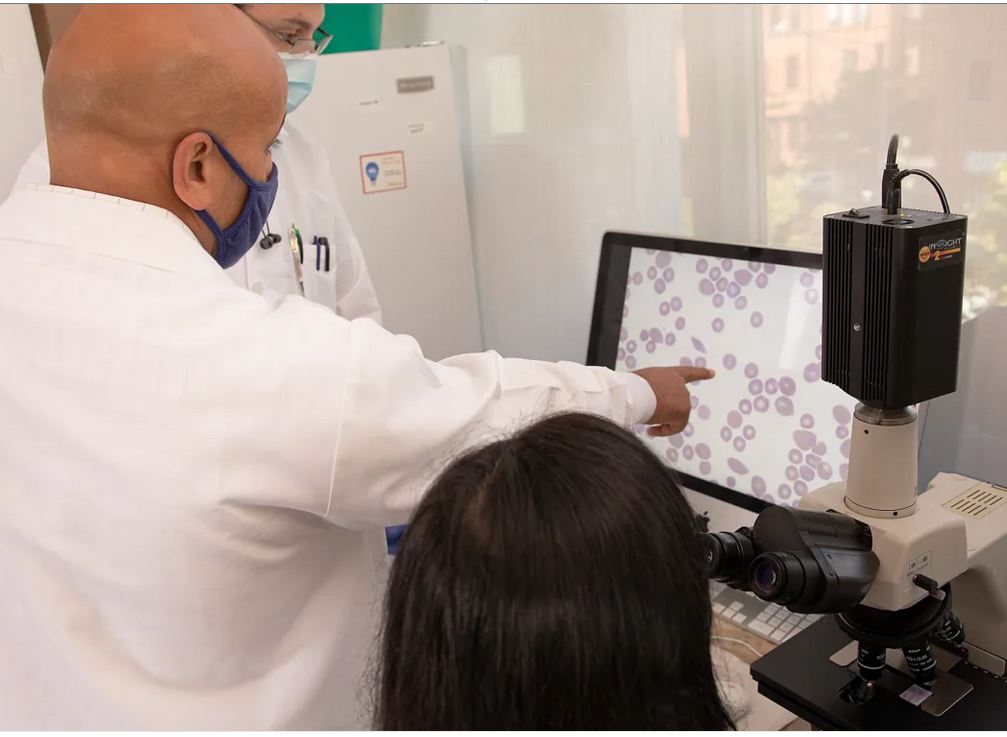Researchers say combo therapy eliminates babesiosis in mice

By Isabella Backman, Yale School of Medicine
Drug-resistant babesiosis may respond to a novel combination therapy, researchers say.
The treatment, which involves the antimalarial drug tafenoquine and the anti-fungal/anti-parasite drug atovaquone, may also provide immunity against future babesiosis infections. The findings were published on January 3 in the Journal of Infectious Diseases.
Babesiosis is a tick-borne illness caused by Babesia parasites that develop and multiply in red blood cells. Its symptoms include fevers, chills, sweats, and fatigue, and in severe cases, can be life-threatening.
Incidence of the disease is rapidly rising, particularly in the Northeast. A 2023 report from the Centers for Disease Control and Prevention (CDC) warns that cases grew by 25% between 2011 and 2019. Beyond tick bites, babesiosis can also be spread through contaminated blood transfusions or during pregnancy or delivery if the mother is infected.
Clinicians typically treat infections with combinations of CDC-recommended medications, including combination therapies of atovaquone and azithromycin or clindamycin and quinine. A growing number of infections, many of those in Connecticut, are resistant to existing therapies.
A Yale-led team’s new therapeutic strategy not only completely clears—and builds immunity against—drug-resistant Babesia parasites in experimental models, but also may offer insights into developing future babesiosis vaccines.
“There is a need for an alternative combination therapy for babesiosis,” says first author Pratap Vydyam, PhD, postdoctoral associate in infectious diseases in the lab of Choukri Ben Mamoun, PhD, professor of medicine and of microbial pathogenesis.
“We identified a specific combination of drugs that clears Babesia parasites effectively—including the drug-resistant parasites.”
Babesia parasites respond well to tafenoquine
In 2018, the U.S. Food and Drug Administration (FDA) approved tafenoquine for the prevention and treatment of malaria. Now, growing evidence suggests that the drug may also be effective in treating babesiosis. But reports of treatment failure with tafenoquine monotherapy suggest that alternative therapeutic strategies are needed.
Intrigued, the Yale team decided to explore how tafenoquine could be utilized with other drugs to develop a new and more effective combination therapy.
First, the team cultured several species of Babesia in human red blood cells. Then, they administered tafenoquine and monitored the effect on parasite growth. These experiments revealed that the drug was effective in blocking parasitic growth.
The team next turned to a mouse model of babesiosis. Researchers treated infected mice with tafenoquine once a day from three to seven days post-infection. After day seven, the drug had effectively cleared the infection from the mice and protected the animals from death.
They also studied tafenoquine in immunocompromised mice infected with the most common Babesia parasite, Babesia microti, and found that the drug effectively cleared the infection in four out of six immunocompromised mice.
Then, the researchers evaluated tafenoquine’s effectiveness against drug-resistant Babesia. They infected mice with a drug-resistant strain of Babesia duncani, one of several Babesia species that infect humans. Once again, they found that tafenoquine, as a monotherapy, was highly effective in clearing resistant B. ducani strains from the mice.
Combination therapy with atovaquone
Still, they felt that a combination therapy might be even more potent, especially in immunocompromised models that didn’t have a 100% success rate with tafenoquine alone.
So next, they tested a combination therapy of tafenoquine and atovaquone in both immunocompetent and immunocompromised mice.
Atovaquone is one of the drugs the CDC currently recommends for the treatment of babesiosis. Using mice infected with Babesia duncani or Babesia microti, they found that this combination of drugs was effective in curing infections across all animal models, including the immunocompromised mice.
Therapies provide insights for babesiosis vaccine
Finally, the team took all of the monotherapy- and combination therapy-treated mice that were cured from infections and re-exposed them to the parasites. Beyond being cured, animals developed immunity against Babesia duncani and were protected from lethal infection following challenge several weeks after drug treatment, the researchers found.
Blood samples from the mice revealed elevated antibodies against Babesia parasites. “We think that these drugs are inducing and maintaining Babesia-specific immunity,” says Vydyam.
In future studies, Vydyam and his colleagues are interested in exploring how long this protection lasts. They also plan on profiling these antibodies, which in turn may help them identify potential babesiosis vaccine candidates.
As Babesia parasites are continuously evolving, the team’s exploration of combination therapies does not end here. The researchers are actively engaged in the development and assessment of new innovative therapeutic approaches.
“Babesia parasites are highly adaptive, and with continuous drug treatment, the emergence of resistant strains against existing drugs is a distinct possibility,” says Vydyam. “The pursuit of new drugs and the implementation of novel therapeutic strategies present promising avenues for more effective management of this disease.”
Furthermore, given the common usage of tafenoquine and atovaquone in malaria treatment, this research may also open avenues for developing this drug combination as a potential treatment for human malaria.
SOURCE: Yale School of Medicine




















We invite you to comment on our Facebook page.
Visit LymeDisease.org Facebook Page